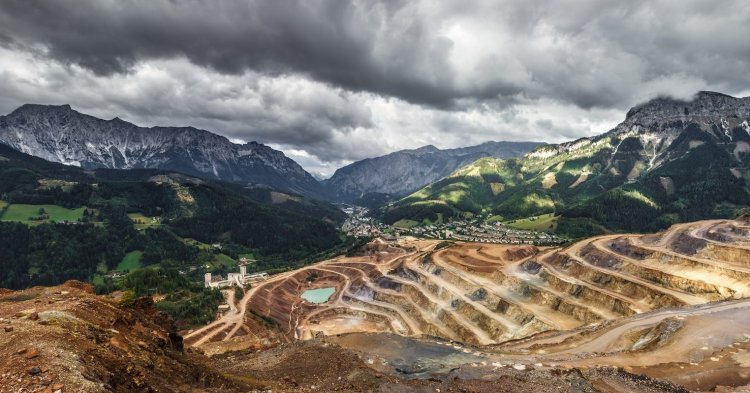In her 2022 State of the European Union address, European Commission President Ursula von der Leyen stated that “lithium and rare earths will soon be more important than oil and gas. […] We must avoid becoming dependent again”. She announced the preparation of a European Critical Raw Materials Act, directed at tackling the European industry’s great reliance on those “critical” raw materials – those that present supply issues (due to scarcity, mining or refining difficulties, etc.) and are needed to power the industry of tomorrow, such as green energies and advanced digital technologies.
Most of the focus has been placed on lithium (used for electric batteries) and “rare earths” (a group of chemical elements used in the permanent magnets of electric vehicles and wind turbines, among other applications), but the list does not end there – in its 2020 analysis, the European Commission identified 30 raw materials critical to European industry (up from 14 in the first 2011 analysis).
While recent research has shown that there are enough reserves of the materials needed to power the green transition even in a 1.5°C warming scenario, demand for those raw materials is set to skyrocket. Some estimates for lithium forecast almost seven times more yearly demand by 2030 than 2020, with magnet rare earth oxide demand expected to grow five-fold in the same period. In parallel, geopolitical risks between Western countries and China are growing, and with China producing more than 95% of global rare earth magnets and 77% of lithium batteries globally, concerns over the Chinese government leveraging their supply chain dominance for geopolitical gains are high. The risk is real, as China already weaponized its rare earth exports against the West during a 2010 territorial dispute with Japan. So, what is to be done, and how can the European Critical Raw Materials Act aid in overcoming this challenge?
Critical raw materials: reduce
If the EU’s push for a more sustainable raw materials supply is to succeed, a multi-pronged approach will need to be taken. Firstly, consumption of critical raw materials needs to be reduced as much as possible, with policies and research focused on minimizing critical raw material amounts in each final product. However, the Jevons paradox may (in the short term) nullify any partial reductions in critical raw material content per product. Instead, investment and research should be mainly directed at pursuing full critical raw material substitution by other non-critical options in key technologies. Even if rare earth-free permanent magnets or lithium-free batteries have worse technical capabilities than their critical counterparts, they could occupy certain market niches with a better quality-price ratio for those applications, instantly eliminating demand for critical materials from a segment of the market.
Critical raw materials: diversify
Additionally, raw materials production diversification is required so as to increase output and reduce the EU’s reliance on its geopolitical rivals. Thus, the EU is already seeking new trade partners among its allies, such as Canada for rare earths or Australia for lithium. In addition, while domestic demand will probably never be fully met by home resources given Europe’s geology, the EU should have enough reserves to partially meet its own demand in several of them. Spain and Portugal hold substantial lithium resources, while Sweden recently announced the discovery of a huge rare earths deposit, for example.
The problem, though, is that the European public is understandably sceptical of a new mining impulse throughout the Continent, given the high cost to landscapes and the environment of the coal-fuelled economy. Thus, efforts should focus on minimizing the environmental impact of new mining operations, and on making it worthwhile for local residents. There have already been positive steps in this direction.
Recently, a prospective lithium miner in Extremadura, Spain, announced it would abandon plans for an open-pit mine (which had gathered great resistance from locals) and opt for underground mining instead. In parallel, research on the use of secondary sources for raw materials extraction is intensifying, with Horizon Europe projects targeting resource recovery from mining waste, fertilizer production and saltworks waste brine, for example.
These new secondary sources are particularly promising, since they are a by-product of other economic activities, thus having little extra environmental impact while adding value to the overall production. Additionally, mine tailings and drainage ponds (waste streams of past mining or metallurgical activity) often contain valuable raw materials, which were not extracted in the past due to technological or economic reasons. Now, that waste could be reprocessed and valorised with the extraction of the raw materials, thus cleaning up its environmental impact while adding value to the local economies.
Critical raw materials: recycle
Finally, recycling of end-of-life products will be one of the main sources of raw materials in the future, especially as green technologies reach critical mass and the most accessible mining sources are depleted. However, recycling of current batteries or magnets is going to cover but a fraction of demand (which is set to skyrocket in the coming years), and those products are complex and challenging to recycle.
Thus, in addition to new materials recycling research, regulations should aid in the shift to “design for recycling” in all products, from the industrial to the domestic. Additionally, as proposed by the European Commission, medium-term standards should be set for recycled or “home-sourced” contents of various key products. This is not only out of improving economic circularity, resource efficiency or supply, but out of economic self-interest. Europe has, for a long time, outsourced its waste for others to dispose of. With high-tech products, this is not only a disservice to our planet’s environment, but loses economic and strategic value, as we give away critical materials for others to recycle and sell back to us. Recycling in Europe would thus not only improve the circularity of our economy but strengthen our industrial base and value creation.
A raw materials industrial strategy
The true trial for the European Critical Raw Materials Act, however, will be whether it can be successfully integrated within the broader European industrial strategy currently emerging. It is of little use to mine and recycle more lithium, rare earths and other critical elements within Europe if those are later exported abroad for manufacturing into final products that are then sold back to Europe. The geopolitical risks to the supply chain are the same all along it, and our economy would only be capturing a fraction of the total added value.
For example, reports indicate that in 2022 Europe could cover most of the raw material of its solar power installations (polysilicon) from local sources. However, European production of solar cells only amounted to 3% of installations. With solar deployment picking up pace, and most solar manufacturing done in geopolitical rival China, the criticality and supply chain risk extend from the silicon raw material to the whole value chain.
In a few decades, once the transition to renewable energies has been completed, new solar panels will be used to replace those reaching the end of their use life, and thus prolonged shortages could stop those replacements, leading to decreases in installed capacity and potential local blackouts if the supply chain issues continue long enough. To counter this risk, Europe needs to invest now, both in manufacturing capacity (of both current as well as next-generation technologies, such as perovskite solar panels) as well as critical raw materials stockpiles that could be liberated into the domestic market in the event of supply shocks.
In general, the EU would do well to look ahead for troubles down the road and take a long-term approach. For example, helium was removed from the Commission’s 2020 critical raw materials list. Helium is sourced as a by-product of natural gas extraction, which means its supply could decrease in the next decades as gas demands falls thanks to the ecological transition. On the other hand, helium is used for many advanced cryogenics applications, such as magnetic resonance imaging, scientific equipment, and quantum computing. In the future, a decreasing supply and a growing demand could leave Europe’s doctors, scientists and engineers with troubles accessing vital helium supply, interrupting medical services and critical infrastructure like quantum computing facilities. Therefore, investing now in alternative cooling technologies such as magnetocalorics is needed to avoid future helium supply issues, and such an investment would have spill-over effects in the energy efficiency of domestic refrigeration as well.
In short, Europe’s critical raw materials policy should make sure to pull all the levers available (reducing demand, diversifying supply at home and abroad, and recycling end-products) to meet its industry’s demand for the raw materials that will fuel our ecological transition. However, consideration needs to be given to the full breadth of the supply chains, lest the criticality of the raw materials be solved only to be kicked down the road towards the end products. Only by considering the full integrated value chain and planning ahead will Europe be able to fulfil the long-term raw materials requirements of our industry.


Follow the comments: |
|
